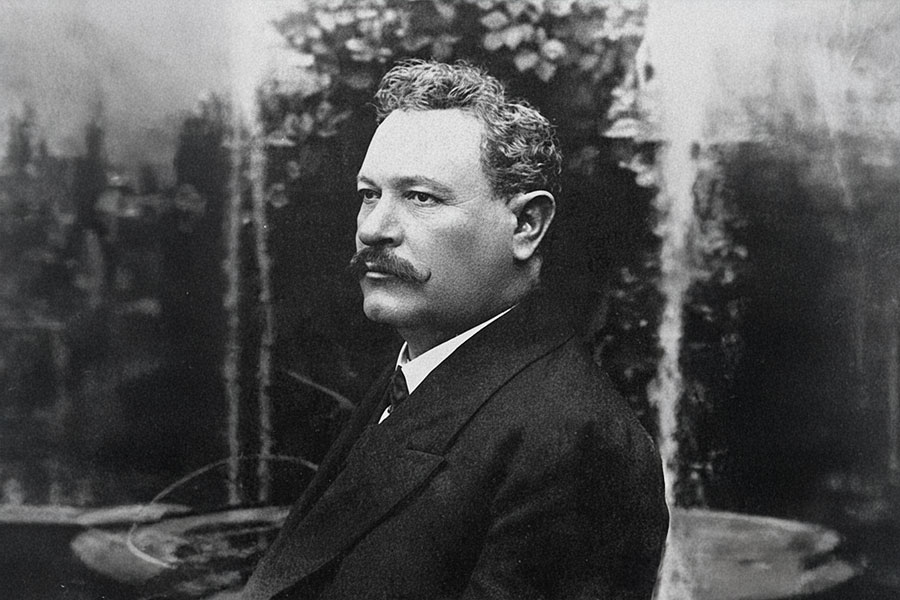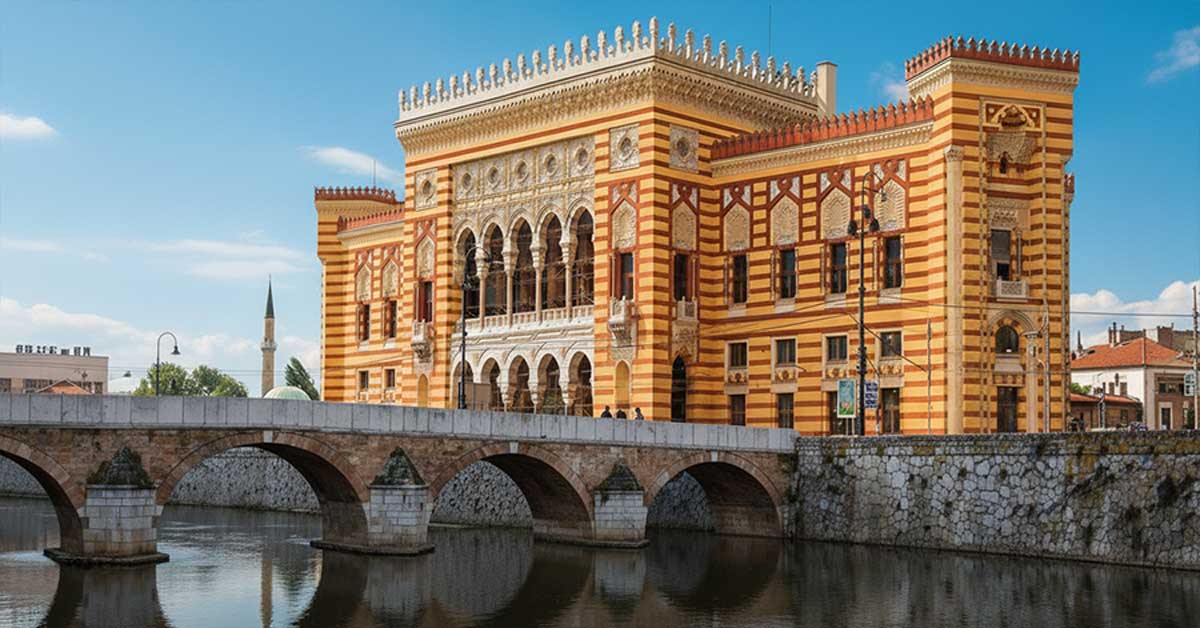Imagine a building that carries two faces of Sarajevo: the oriental spirit of Baščaršija and the imperial ambition of Austria-Hungary. Sarajevo City Hall, or Vijećnica, is not just an architectural gem on the banks of the Miljacka River – it is a book made of stone and colors, a place that has lived through glory, destruction, and rebirth.
Built at the end of the 19th century to showcase the power of the empire, turned into a treasury of knowledge with millions of books, burned down during the war, and finally restored in the 21st century – City Hall is Sarajevo in miniature. Today, it is the cultural heart of the city and an essential stop for every visitor. If you are wondering when it was built, who designed it, what it went through during the war, and what it is used for today, here you will find all the answers – and more than what standard guidebooks usually tell you.
Table of Contents
When was Sarajevo City Hall built?
Sarajevo City Hall was built during the Austro-Hungarian rule, at a time when the monarchy wanted to give Sarajevo a representative building that would symbolize its “European character” while still preserving the oriental identity of the city. Construction began in 1892, finished in 1894, and the grand opening took place on April 20, 1896.
City Hall was never just a building. It was a political and architectural statement – a symbol of imperial power and at the same time an acknowledgment of Ottoman heritage. That is why it was built in the pseudo-Moorish style, with elements of Islamic architecture from Andalusia and North Africa, but designed with Viennese precision.
Who designed Sarajevo City Hall?

Ćiril M. Iveković
Three architects left their mark on the story of City Hall. Karel Pařík, a Czech architect, created the first design, but it was rejected for not being “oriental” enough.
The project was then taken over by Alexander Wittek, a Viennese architect fascinated by Islamic ornamentation. His design gave City Hall its recognizable look: colorful façades, Moorish arches, and arabesques reminiscent of the Alhambra in Granada. Unfortunately, Wittek became ill and died before completing the work. The final stage was entrusted to Ćiril M. Iveković, a Croatian architect, who shaped the interior and brought the project to completion. Together, though in different phases, these three architects created one of the most beautiful buildings in the Balkans.
Where is Sarajevo City Hall located?
The official address is Obala Kulina bana 1, 71000 Sarajevo. City Hall is located on the banks of the Miljacka River, right at the entrance to Baščaršija, the Ottoman old town. Next to it stands the famous Latin Bridge, known worldwide for the assassination of Archduke Franz Ferdinand in 1914 – the event that triggered the First World War.
This area is a true historical epicenter: within just a few minutes’ walk, you can pass from Ottoman alleys to Austro-Hungarian boulevards, and standing in front of City Hall, you feel both worlds meeting.
What was Sarajevo City Hall used for in the past?
Originally, City Hall served as the seat of the city government – a place where municipal authorities made decisions and where Sarajevo presented itself as a modern, growing capital.
Later, it was transformed into the National and University Library of Bosnia and Herzegovina. It housed around 1.5 million books and documents, including hundreds of thousands of rare manuscripts and historical records.
It became a temple of knowledge and the written memory of the nation.
What happened to Sarajevo City Hall during the war?
Source: Youtube Channel “nadanasnjidan“
The most tragic event in the history of City Hall took place during the night of August 25–26, 1992. Shells fired by the Army of Republika Srpska hit the building and set it ablaze.
The fire consumed almost the entire collection – between 1.5 and 2 million books were destroyed. Citizens of Sarajevo still recall blackened pages of books floating through the air like snow.
This act is often called “bibliocide”, the largest destruction of a library in Europe since the Second World War.
How was Sarajevo City Hall rebuilt?
For years after the war, City Hall stood in ruins – a scar in the heart of the city. Only with the help of international donations and local experts did reconstruction finally begin.
Every tile, every ornament, and every stained glass window had to be restored according to old photographs and architectural plans. The restoration took years and cost millions.
On May 9, 2014 (Europe Day), City Hall was officially reopened, and on July 17, 2014 it was opened to the public. Sarajevo had regained one of its greatest landmarks.win any medals, but it received global praise for the warmth of its welcome and the flawless organization.
What is Sarajevo City Hall used for today?
Today, City Hall has a dual role:
- City government – it hosts the Sarajevo City Council and official protocols.
- Cultural and tourist venue – it is a stage for concerts, exhibitions, literary evenings, weddings, and international events.
For tourists, it is one of the most beautiful sights of Sarajevo. For locals, it is a symbol of pride and resilience.
Opening hours of Sarajevo City Hall
Every day: 10:00 AM – 6:00 PM
Closed: January 1 and December 25
Ticket prices for Sarajevo City Hall
- Adults: 10 KM (approx. €5)
- Students & pupils: 5 KM (approx. €2.5)
- Children under 6: free entrance
- Groups & families: discounts available with prior booking
- Guided tours: available for an additional fee
Visitor tips
- Best time for photos: in the morning before 11 AM, when sunlight shines directly on the façade and the Miljacka River.
- Visit duration: 30–60 minutes on your own, longer with a guide.
- Must-see inside: the grand staircase, the stained glass windows, and the oriental arches.
- Nearby attractions: Sebilj fountain in Baščaršija, Gazi Husrev-bey’s Mosque, the Sarajevo Museum at the Latin Bridge.
Our Most Popular Tours To Sarajevo
We offer many tours that include a visit to Sarajevo and its most popular locations:
- Sarajevo Siege Tour & War Tunnel 1992 / 1996 (Most Popular)
- Full Day tour from Sarajevo to Međugorije & Mostar
- Full Day Tour from Sarajevo to Travnik and Jajce
- Full-Day 5 Cities Tour from Sarajevo to Herzegovina (Mostar)
- Full day Tour from Sarajevo to Dubrovnik (Kotor or Split)
- Full Day tour from Sarajevo to Belgrade
Don’t Hesitate To Say Hi!
Got any questions about our tours or the city? Don’t hesitate to contact us anytime for more info and booking.
Use the following phone number and email:

